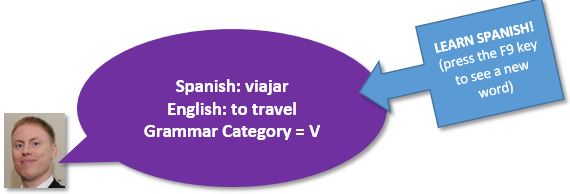How did a New York Times article about the lack of scientific cat research lead me to this spreadsheet: “Affective norms of 875 Spanish words for five discrete emotional categories and two emotional dimensions” ?
Follow The Dots
I was reading the New York Times and saw this “Why Scientists Love to Study Dogs (and Often Ignore Cats)” by James Gorman. It was interesting. One part caught my eye.
And now the numbers: A search of Pub Med, a database that includes most biomedical journals, yielded 139,858 results for cats and 328,781 results for dogs.
PubMed Database? I had to check it out!
What Is PubMed?
Here is the link for Pubmed.gov What is it?
PubMed comprises more than 28 million citations for biomedical literature from MEDLINE, life science journals, and online books. Citations may include links to full-text content from PubMed Central and publisher web sites
I started snooping around and thought “Do they have Excel files?“
This search showed studies with Excel files. I found one about Spanish.
Learning Spanish is one of my hobbies so I kept going and read the description:
In the present study, we introduce affective norms for a new set of Spanish words, the Madrid Affective Database for Spanish (MADS), that were scored on two emotional dimensions (valence and arousal) and on five discrete emotional categories (happiness, anger, sadness, fear, and disgust), as well as on concreteness, by 660 Spanish native speakers. Measures of several objective psycholinguistic variables–grammatical class, word frequency, number of letters, and number of syllables–for the words are also included. We observed high split-half reliabilities for every emotional variable and a strong quadratic relationship between valence and arousal. Additional analyses revealed several associations between the affective dimensions and discrete emotions, as well as with some psycholinguistic variables. This new corpus complements and extends prior databases in Spanish and allows for designing new experiments investigating the influence of affective content in language processing under both dimensional and discrete theoretical conceptions of emotion.
WHAT?
Summary: 660 native speakers rate words based on happiness, anger, sadness, fear, disgust.
What’s in the Excel File?
Get the Excel file here. Here are two sample words:
Cell A18: acosar (harass). Ranks high for fear & anger, very low for happiness.
Cell A56: amistad (friendship). Ranks very high for happiness, low for anger.
Explore the differences between male & female responses and the standard deviation score (how much respondent’s answers vary from each other).
I added a few things:
- in sheet ‘WordList‘ formulas in row 1 and at the very bottom
- in sheet ‘WordList‘ dynamic hyperlink array formula (bottom of column J)
- in sheet ‘Learn more Excel & Spanish !‘ random word generator
CHALLENGE !
How does the random word generator work? (i.e. describe the criteria for selecting words)
Add a comment below with your answer!
Ooops!
At first I assumed that all the original formulas were copied and pasted as values. However, I found a few formulas that were still active.
On the ribbon go to ‘Data’ and ‘Edit Links’ and you’ll see the source file link. In sheet ‘WordList‘ go to cell Q121 to see the external path.
Also, in cell J366 you’ll see a value of 26. Is this an error? Maybe a typo?
Don’t forget that Excel files can contain personal information (i.e. author) that you’ll often want to remove.
Summary
An analysis of Spanish words in Microsoft Excel. Two of my favorite things combined together!
If you can’t wait for the next exciting Free Data episode here’s another PubMed Excel file to munch on:
An Insight into the Sialome of the Lone Star Tick, Amblyomma americanum, with a Glimpse on Its Time Dependent Gene Expression.
Don’t blame me if you get in trouble because you stay up all night! Until next time, keep Exceling!
About Me
I’ve been a Data Analyst since 2001. I live in Markham Ontario Canada.
In my free data posts I enjoy exploring the different ways people use Microsoft Excel.
Check out my recommended Excel Training section.
I also have a YouTube channel which is of course all about Excel 🙂






